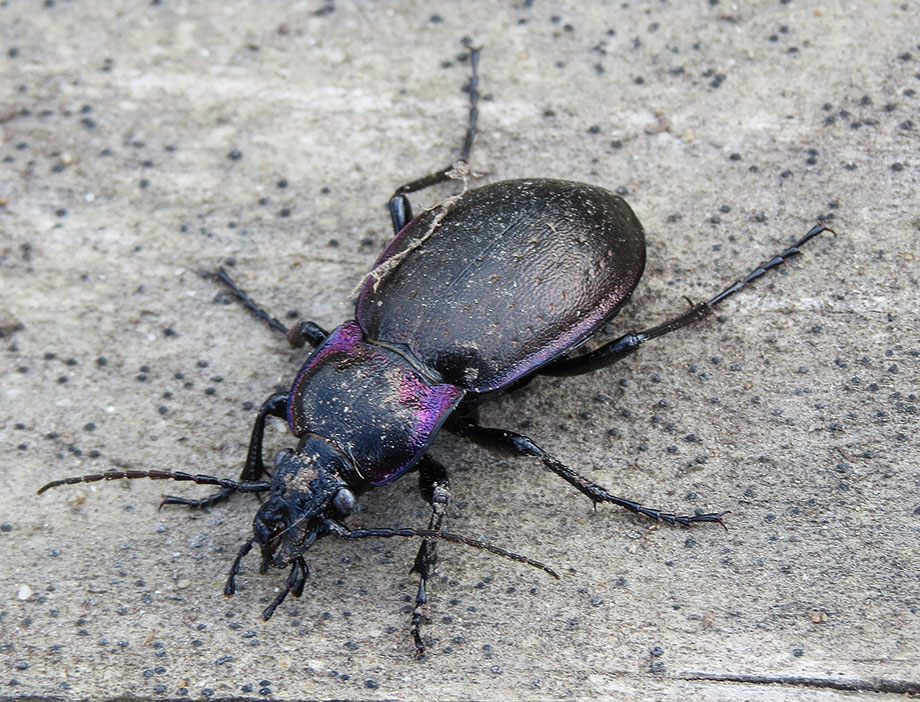March 13 Column: Beneficial Insects

Who wants to know more about the beneficial insects in our gardens? If you raised your hand, you’re in luck because that’s the topic of today’s garden column. You can read it in the online edition of The Spokesman-Review: Some insects are good for your garden. Or you can read the text of my column underneath this week’s video.
While researching and photographing bugs for my book, The Vegetable Garden Pest Handbook, I decided it was my mission to spread the word about the many good bugs out there. It’s easy for us to think our gardens are only inhabited by damaging insect pests, but that couldn’t be farther from the truth.
Consider this: over 1 million insect species have been identified on our planet. Did you know that only 1 percent of those bugs actually cause trouble? The remaining 99 percent are either beneficial or benign insects. Beneficial insects include pollinators and predatory bugs. Many benign insects aid in the decomposition of organic matter. I feel these statistics help put things into perspective!
Note: the photo at the very top of this post is of a ladybug larva. Did you know they look like little crocodiles?! Yep, they do and they have voracious appetites for aphids. Don’t squish them!
This week’s video is an introduction of sorts. I get so many questions about the layout of our vegetable garden, how large the raised beds are, how we water them, and so on – this seemed like a great time to introduce myself, where I live, and the details of our garden. I hope you’ll enjoy it.
Here’s my garden column. Be sure to read the final paragraph because it’s a very important point!
by Susan Mulvihill
I’ve been gardening since the age of 16. Back then, I even had a subscription to Organic Gardening magazine. Each issue educated me about the importance of avoiding the use of pesticides and other chemicals in our gardens.
I learned that even though pesticides can be a quick fix for an insect problem, they are non-selective. This means they also kill the good bugs that would have helped us control those pests.
As the author of The Vegetable Garden Pest Handbook, I’ve really focused my attention on the many beneficial insects around us. While it can be hard to remember this at times, there are far more good bugs on this planet than bad.
Most gardeners enjoy spotting ladybugs and know they have voracious appetites for aphids. They also recognize praying mantids in the garden and understand they are amazing predators. Praying mantids are also opportunists in that they’ll kill and eat any insect, good or bad, if it sits still long enough – but that’s a story for another day.
Those two insects are the most recognizable but there are so many others that deserve to live in our gardens. If you’ve got aphids, there are a slew of beneficial insects that will either eat or parasitize them.
Colorado potato beetles and their larvae are dreadful pests of potatoes, eggplants, peppers and tomatoes. While researching how to control them organically, I learned that assassin bugs, damsel bugs, ground beetles, lacewings, ladybugs, parasitic wasps, praying mantids, robber flies, and spiders prey upon them.
Thrips are tiny insects that use their piercing/sucking mouthparts to extract the sap from leaves, resulting in stunted plant growth. It turns out that big-eyed bugs, hoverflies, green lacewings, long-legged flies and parasitic wasps are more than willing to decrease their population.
These examples are only the tip of the iceberg. What can we gardeners do to foster a healthy population of beneficial insects in our gardens?
- First and foremost, eliminate the use of pesticides. In addition to the fact that they are non-selective, I learned there are some particularly bothersome bugs that have become resistant to pesticides. These include Colorado potato beetles and spider mites. Let’s not continue that trend.
- Hone your insect identification skills. I’ll be the first to admit there are a lot of scary-looking bugs that are fantastic predators. It’s so important to know what you’re dealing with before you decide its fate. There are insect identification apps and websites to help you with this. Don’t forget to ask your local Master Gardener volunteers for assistance.
- Plant a diverse landscape to attract the good bugs. It should include trees, shrubs, native grasses and lots of flowers. What do flowers have to do with beneficial insects? Many species need nectar and/or pollen during part of their life cycle. When choosing flowers, select ones with a variety of flower heads to accommodate the insects’ different types of mouthparts.
- Try not to be too tidy. Most of us prefer orderly landscapes and clean up leaf litter from beneath shrubs in the fall. Those leaves provide overwintering habitat for beneficial bugs such as ground beetles and ladybugs.
Above all, remember that a bug-free garden is not the goal. To have beneficial insects, you must also have food for them, often in the form of damaging bugs. This year, strive to create a healthy, balanced ecosystem and have fun getting to know the insect life that calls your garden home.
Susan Mulvihill is author of “The Vegetable Garden Pest Handbook.” She can be reached at Susan@SusansintheGarden.com. Watch this week’s video at youtube.com/susansinthegarden.

